Recently, the Comprehensive Supervision and Law Enforcement Institute of Longyang District Health Bureau of Baoshan City organized a special inspection of epidemic prevention and control in medical institutions. Law enforcement officers focused on the implementation of epidemic prevention and control measures in medical institutions by checking the site, consulting materials and randomly asking questions. The implementation of the responsibility system for pre-examination, triage and first diagnosis; Training of medical personnel; Knowledge of epidemic prevention and control and mastery of disposal process; Whether it is illegal to treat patients with "Top Ten Symptoms" in COVID-19 and standardize the referral situation; Implementation of prevention and control of nosocomial infection; Implementation of nucleic acid detection.
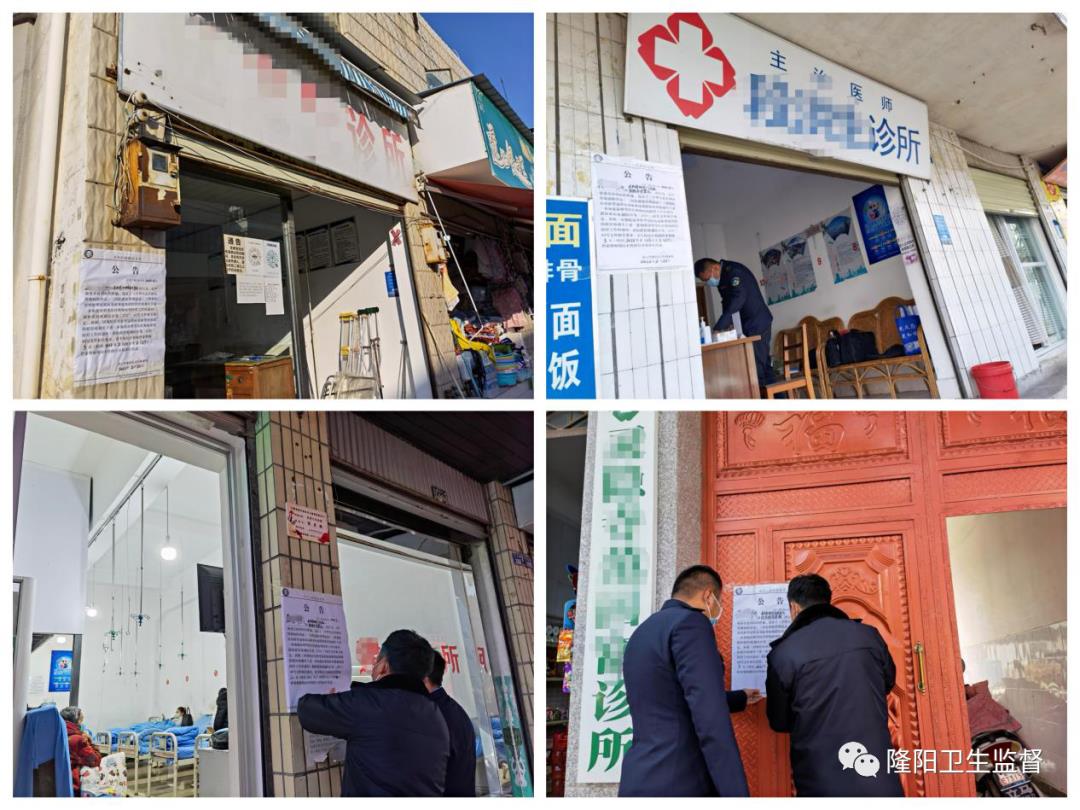
Since February 18th, 20 clinics have been ordered to suspend business for rectification, and 5 clinics have been put on record for failure to fill out outpatient logs, prescriptions and other medical records, and medical wastes have not been collected, classified or placed in special containers in time.
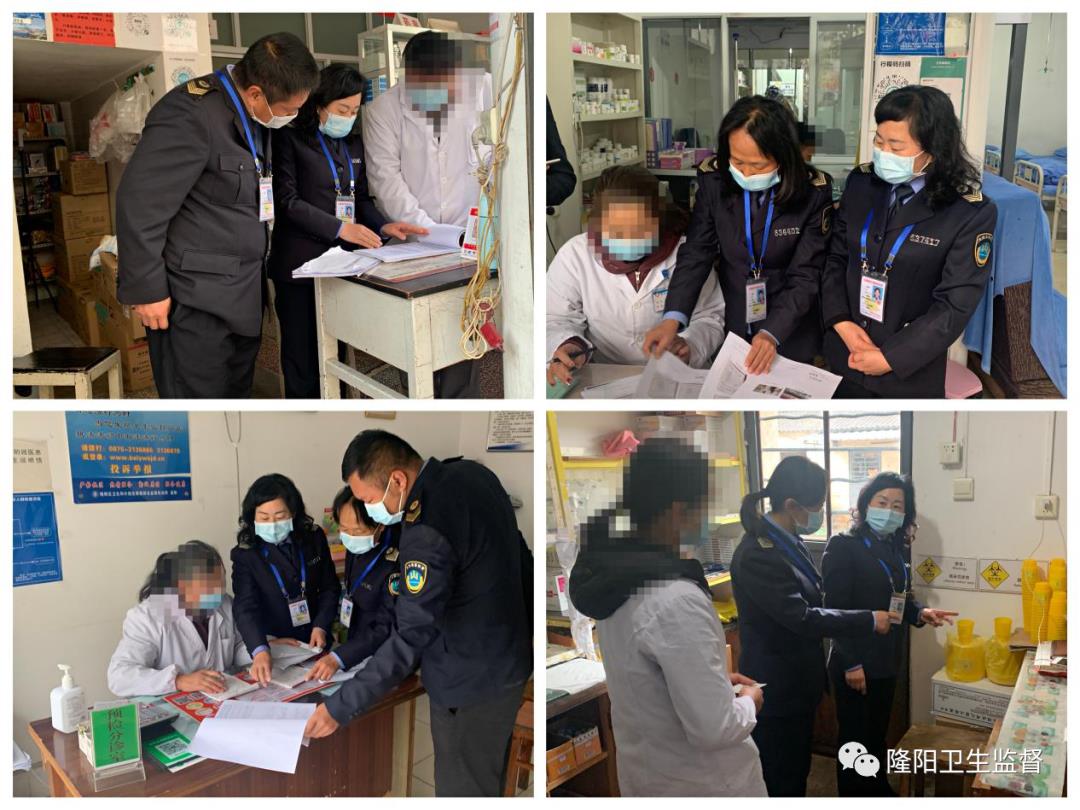
Since the outbreak of COVID-19 in early 2020,
Outbreaks have continued in various places.
Multiple rounds of epidemic continued to spread.
Facing the complicated epidemic situation,
All primary medical institutions must be vigilant,
Implement the prevention and control of normalized epidemic situation,
Protect your own safety while protecting the epidemic.
So, what are the requirements for the prevention and control of normalized epidemic situation?
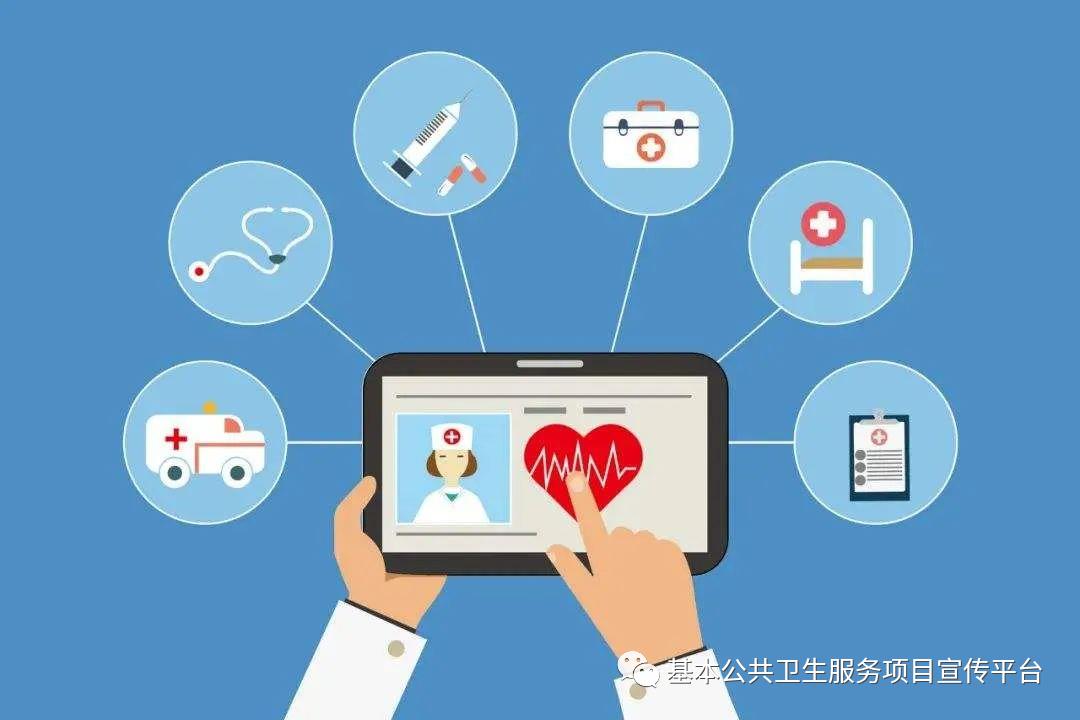
0one
Primary medical institutions
Five points for attention in receiving medical treatment under the normalization of epidemic situation
01 Strictly implement the system of pre-inspection and triage
Pre-inspection and triage points are set up at the entrance, equipped with prevention and control items (non-contact temperature measuring equipment, masks, 75% alcohol, medical gloves, pre-inspection and triage registration forms, etc.), and all patients who come to see a doctor are subject to pre-inspection and triage, and the regulations such as "masks must be worn, body temperature must be measured, health code must be checked, and travel code must be read" must be strictly implemented.
For those who cannot provide the "health code" independently, they should register their personal information in detail; It is necessary to continuously pay attention to the development and changes of epidemic situation in various places and the risk of level modulation. If it is found that the "health code" is abnormal or the "travel code" shows that there are people with a history of living in high-risk areas, they should take the initiative to report to the local health and health commission, persuade relevant personnel to do personal protection, and actively cooperate with local epidemic prevention and control departments to implement epidemic prevention and control measures.
The following pre-screening and triage processes must be done by medical staff.
Know clearly:
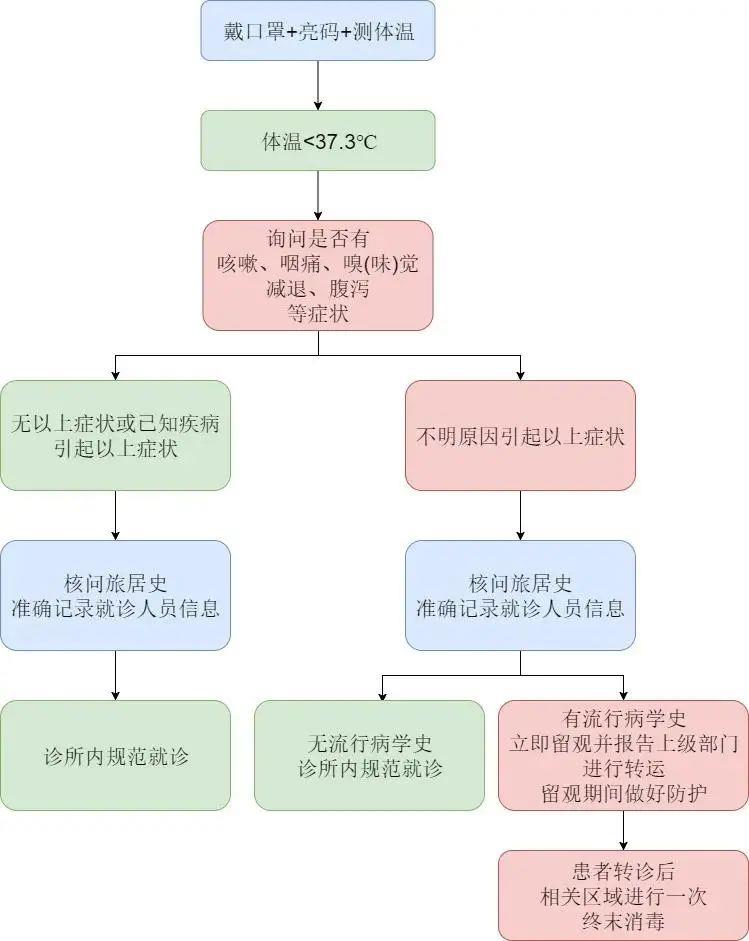
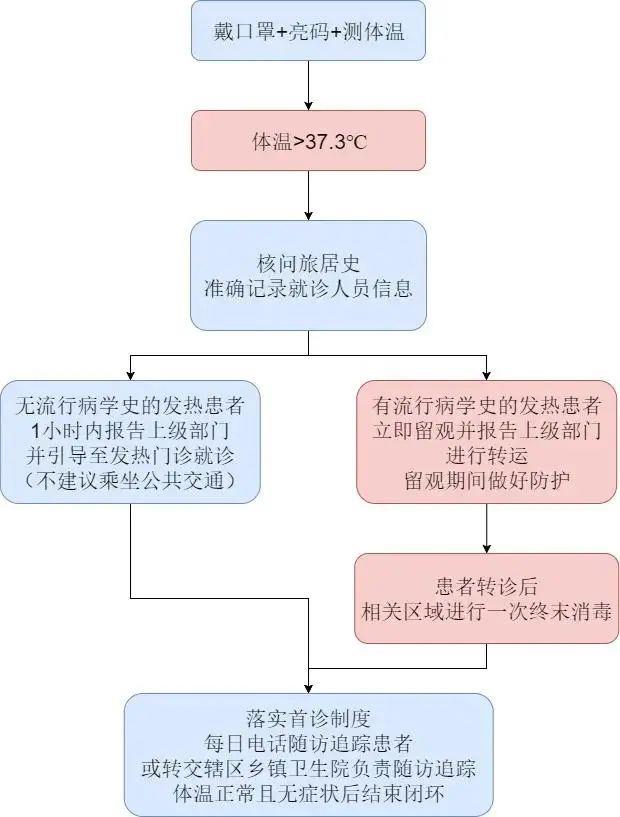
02 Implement the information registration system for medical personnel.
Outpatient consultation must accurately register the basic information of the patient, including name, gender, ID number, residential address, contact information, residence history in key areas, contact history with confirmed patients, etc. When selling drugs, prescriptions must be issued.
Ask the patients about their clinical manifestations, focusing on whether there are any COVID-19-related symptoms such as fever, dry cough, hypoesthesia, nasal congestion, runny nose, sore throat, conjunctivitis, myalgia and diarrhea, so as to ensure that no one is missed, and the information of accompanying doctors of suspicious patients should also be registered.
03 Strengthen the responsibility system of first diagnosis.
Community health service stations, out-patient departments, clinics and other primary medical institutions are not allowed to diagnose and treat patients with COVID-19-related symptoms without authorization, nor are they allowed to shut them out and push them away.
Patients with COVID-19-related symptoms should be inquired and registered in epidemiology and reported to the local health and health commission immediately. And inform 120 emergency agencies as soon as possible to refer them to medical institutions with fever clinics for further diagnosis and treatment, and strictly implement closed-loop management measures during the whole process.
04 do a good job in personnel management
Strictly implement the management of patients, implement "one person, one clinic and one room", guide the masses to see a doctor in an orderly manner, and avoid getting together.
Medical staff should do personal protection in accordance with the requirements of the specification (wearing work clothes, medical surgical masks, working caps and gloves) before receiving medical treatment. Hand hygiene and disinfection should be carried out before and after contact with patients. Hand-washing-free disinfection gel should be provided for those without hand-washing facilities.
Strictly abide by the health management regulations such as daily health monitoring and out-going report of employees in the unit. According to the requirements of epidemic prevention and control, the nucleic acid sampling and testing of medical staff were carried out. People who have been vaccinated with the second dose of COVID-19 vaccine for 6 months should be vaccinated with the third dose as soon as possible.
Standardize disinfection and medical waste disposal.
Clear the indoor articles and facilities unrelated to the diagnosis and treatment work, keep the diagnosis and treatment place clean and tidy, clean and disinfect the indoor air, floor, countertops and diagnosis and treatment facilities at least twice a day, and register truthfully, and increase the disinfection frequency when there are many patients.
Non-disposable medical devices should be disinfected with one disease, one use and one disinfection. Set up medical waste collection barrels and sharp weapon boxes, collect and dispose of medical waste according to regulations and make registration.

02
Prevention and control measures of epidemic situation in primary medical institutions
"11 allowed" and "11 not allowed"
01 "11 standards" for epidemic prevention and control in medical institutions
1.Do a good job in storing epidemic prevention materials such as masks, hand sanitizers and disinfectants, formulate emergency work plans, set up emergency disposal areas, implement the main responsibility of the unit, and strengthen the training of personnel health knowledge.
2.Pay close attention to the change of epidemic situation dynamically, and publicize the area where the positive infected people are located in time.
3.Vaccination of the staff should be done one after another, and those who meet the conditions should be vaccinated with booster times. Establish a staff health monitoring system, register daily, and seek medical advice in case of suspicious symptoms.
4.Improve the network registration and appointment functions, and actively promote them. Reasonably control the number of patients in a certain period of time to prevent people from gathering. A "1 meter line" should be set up in public areas to remind patients to keep a safe distance.
5.Standardize the establishment of pre-inspection and triage points, do a good job in pre-inspection and triage, and carry out patient risk investigation according to the "Covid-19 Infection Risk Investigation Form of Medical Institutions in Liaoning Province". Strictly implement the responsibility system for first diagnosis.
6.All personnel entering medical institutions should wear masks correctly. Each entrance has a special person to scan the code, measure the temperature, register, and do a good job of classification and disposal. Patients and their families without smart phones or health codes should register their identity information and main itinerary within 14 days.
7.Strengthen ventilation. Try to use natural ventilation as much as possible. If central air conditioning is used, it should be operated in accordance with Hygienic Code for Operation and Management of Air Conditioning and Ventilation System in Offices and Public Places during COVID-19 Epidemic (WS 696—2020). Keep the ward (area) well ventilated, and the air flows from the clean area to the polluted area.
8.Strengthen the prevention and control of nosocomial infection, strictly implement the zoning management requirements of medical institutions, promptly investigate risks and take disposal measures, strictly check the workflow of pre-inspection, triage and fever clinic, and strengthen prevention and control measures. Medical staff should do a good job of protection in strict accordance with the relevant protection level regulations.
9.Strengthen the management of medical waste, remove the garbage in time, and strengthen the cleaning and disinfection of the surface and ground of objects.
10.Do a good job in cleaning and disinfecting public facilities (elevators, public toilets, etc.), public areas (waiting rooms, halls) and high-frequency contact surfaces (door handles, medical tables, etc.). Strengthen the cleaning and disinfection of key departments (fever clinic, emergency room, isolation ward, etc.).
11.Public toilets are equipped with hand sanitizer and running water hand washing facilities, and hand sanitizers should be equipped in public areas.
02 Prevention and control of epidemic situation in medical institutions "11 is not allowed"
1.Dynamic attention to the changes of epidemic situation and timely publicity of the areas where positive infected people are located cannot be loosened.
2.Pre-examination, triage and risk investigation cannot be relaxed.
3.Ventilation system and measures should not be loosened.
4.The cleaning and disinfection system and measures for public facilities and equipment, public areas and high-frequency contacts should not be loosened.
5.Hospital sense prevention and control and personal protection can not be loose.
6.The management of medical waste should not be lax.
7.Patients with COVID-19-related symptoms shall not be admitted at will, and they shall be classified and disposed of.
8.The registration system of code scanning and temperature measurement should not be loosened, and classified management should be done well.
9.Staff with respiratory symptoms such as fever and cough should not be employed.
10.The staff should receive all the vaccines according to COVID-19, and those who have not completed the whole vaccination should not be on duty.
11.Patients should wear masks correctly all the time and should not remove them at will.
0three
Selection principle of protective equipment for medical personnel
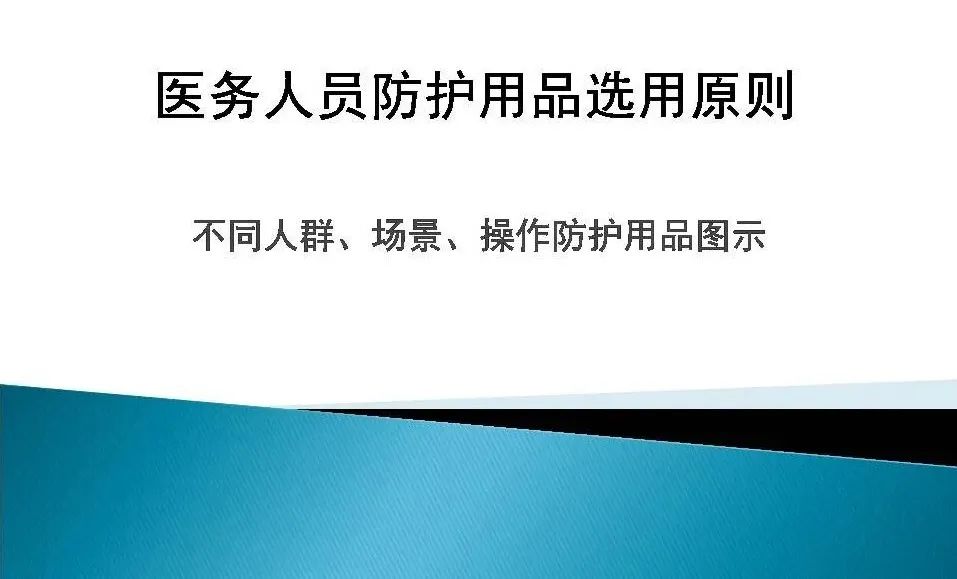
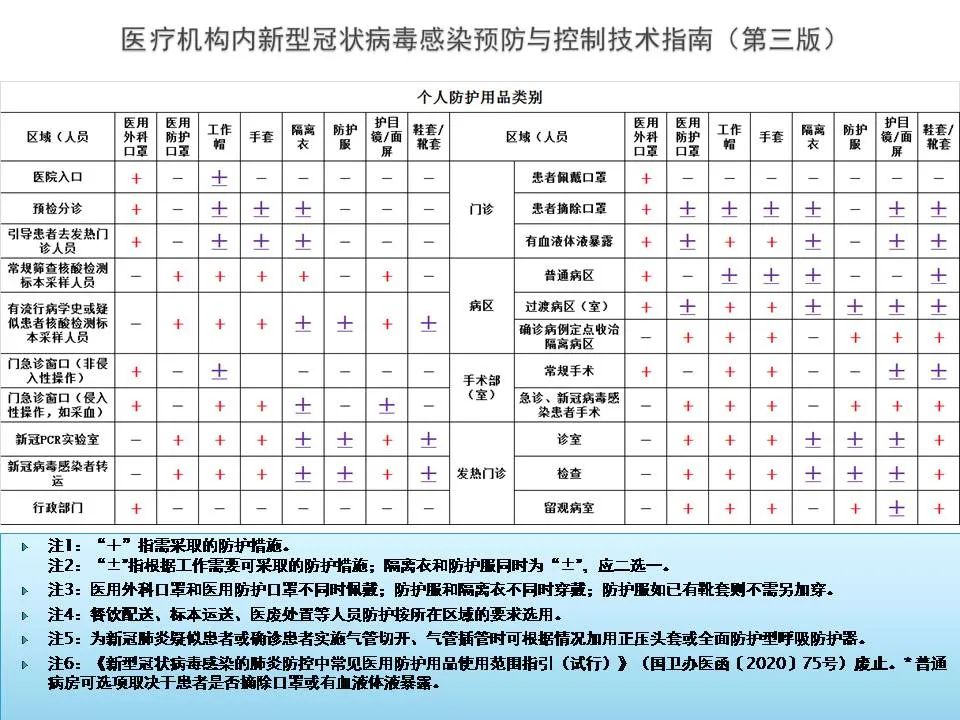

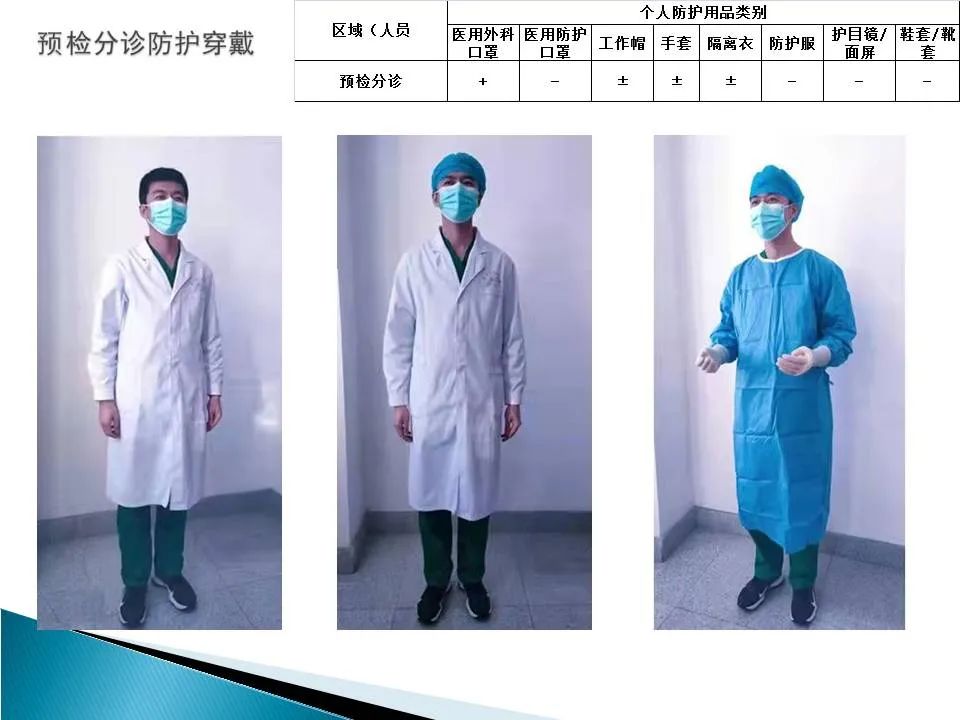
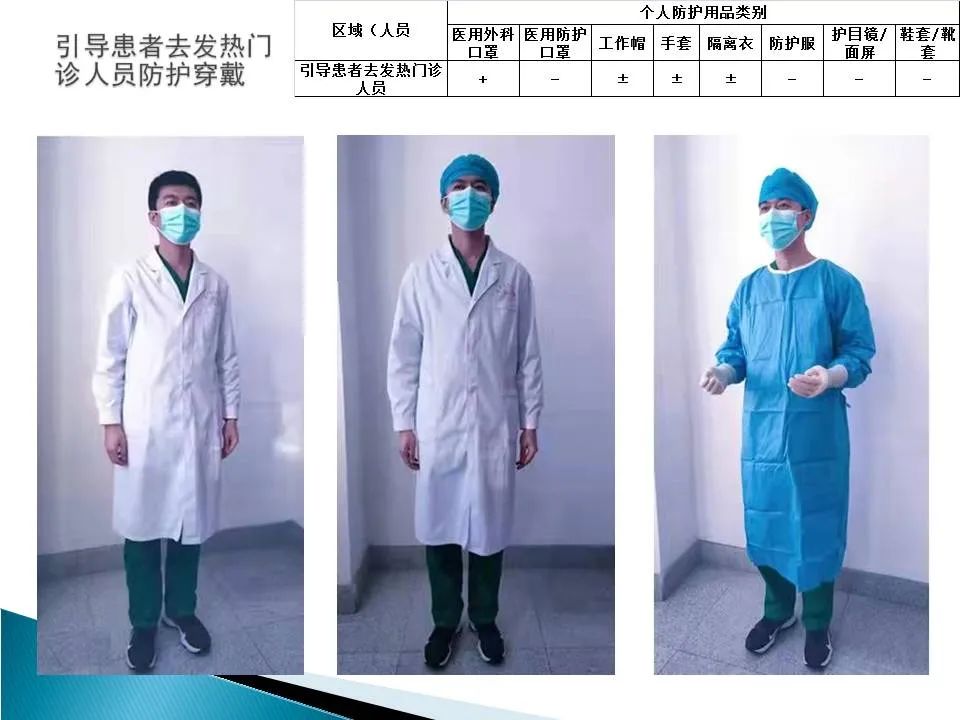
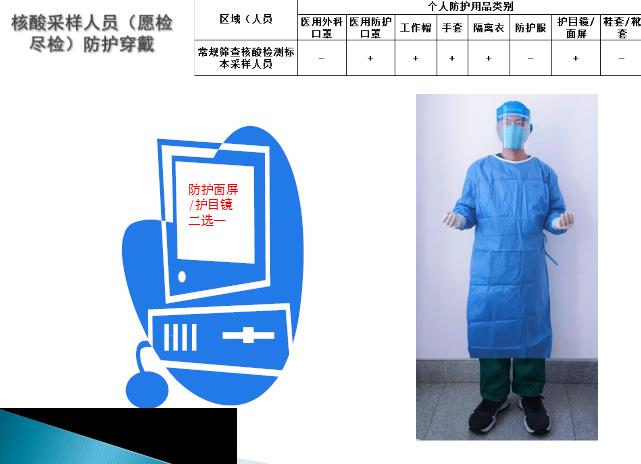
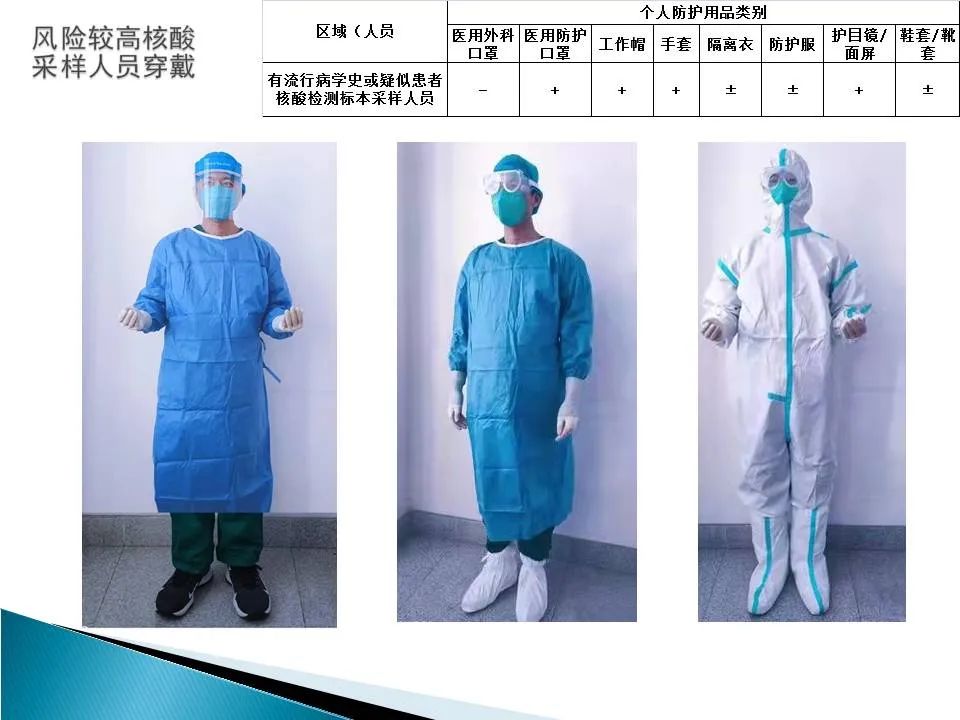
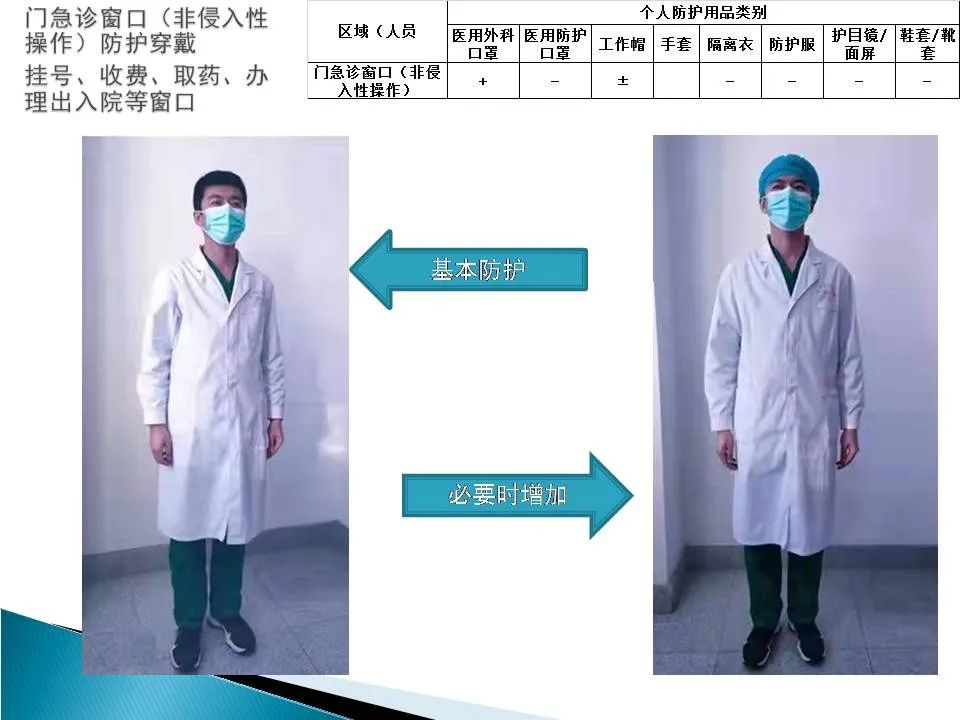

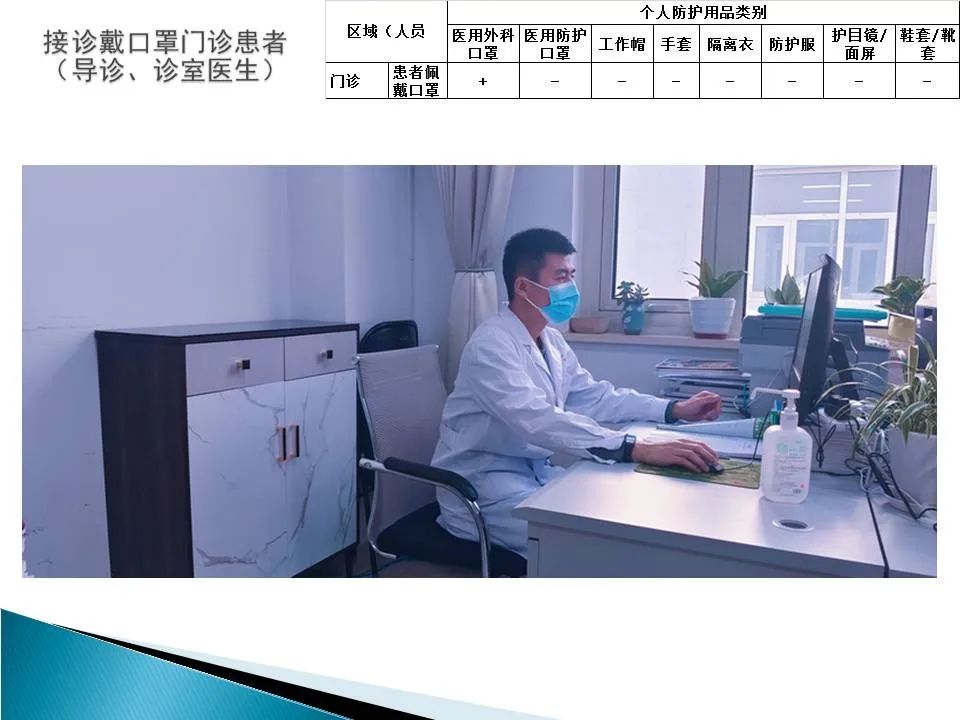
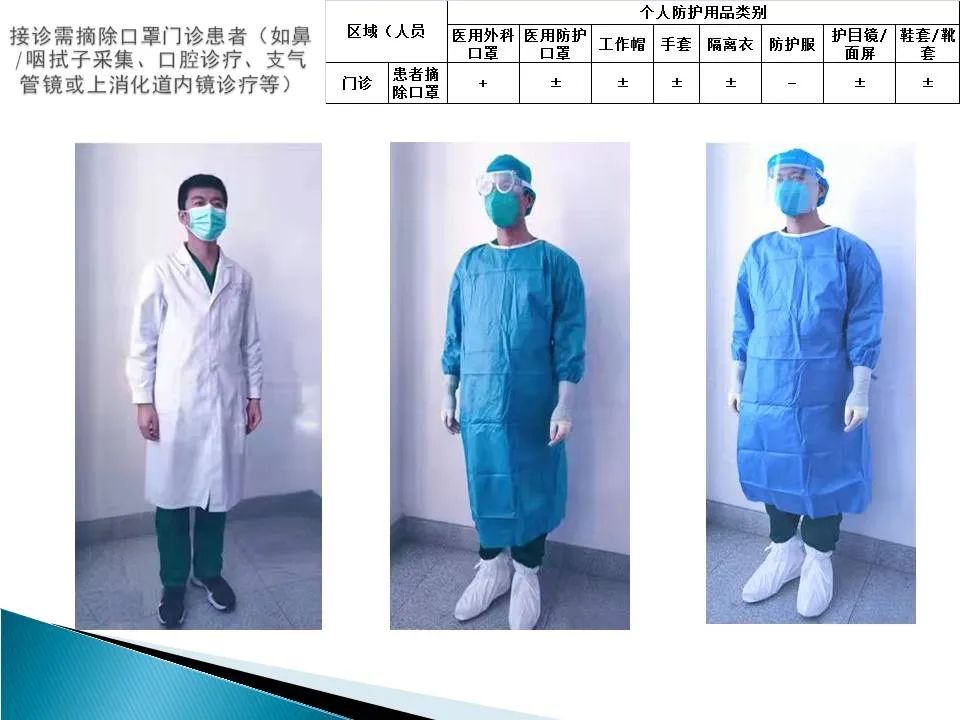
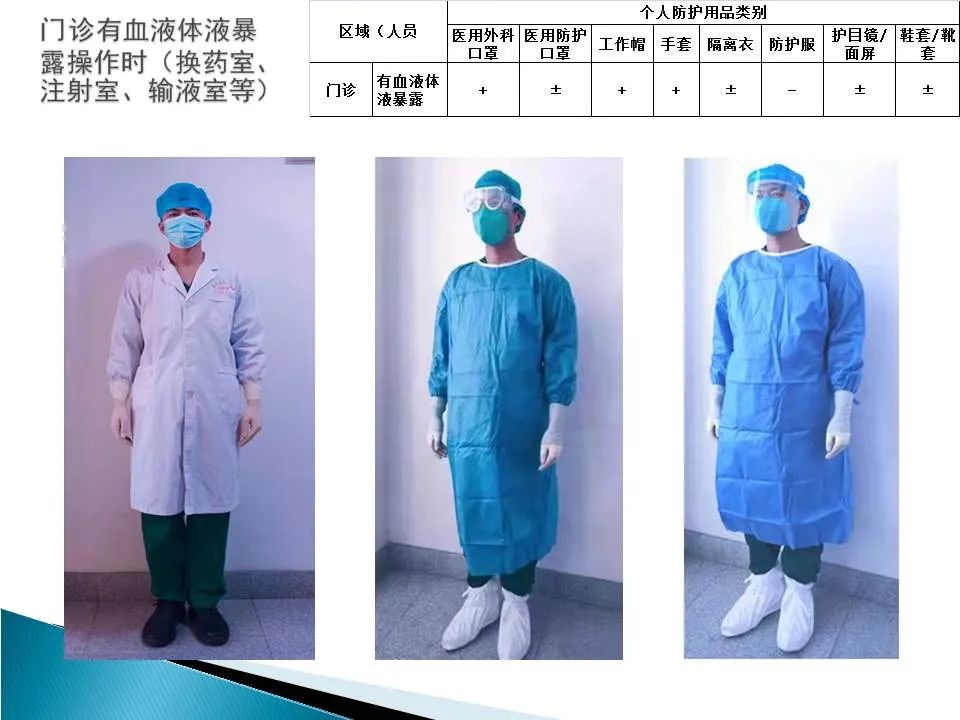
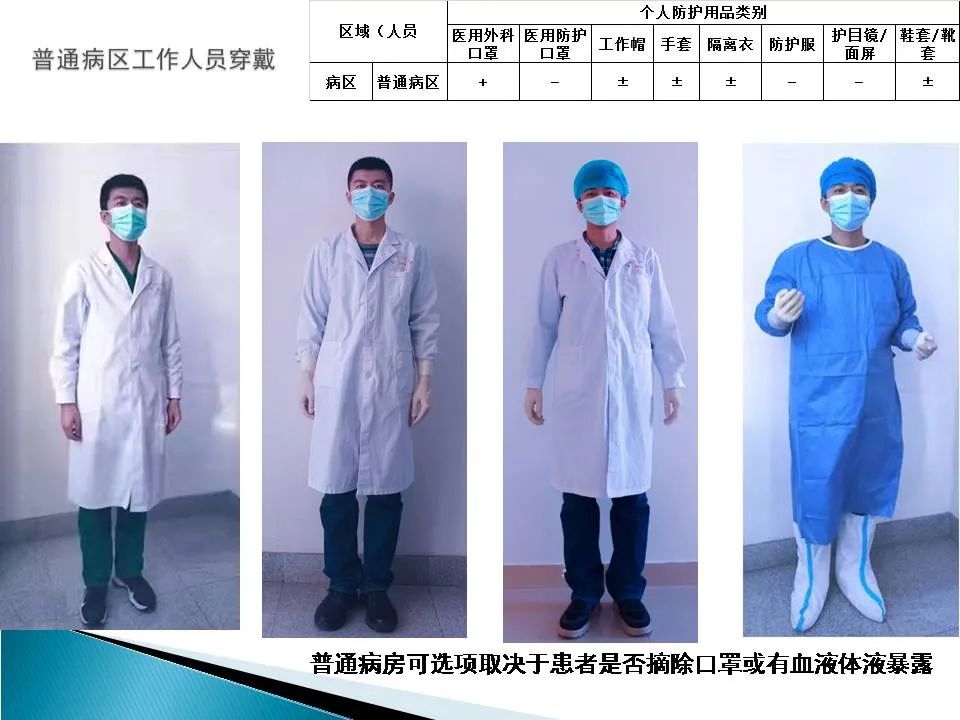
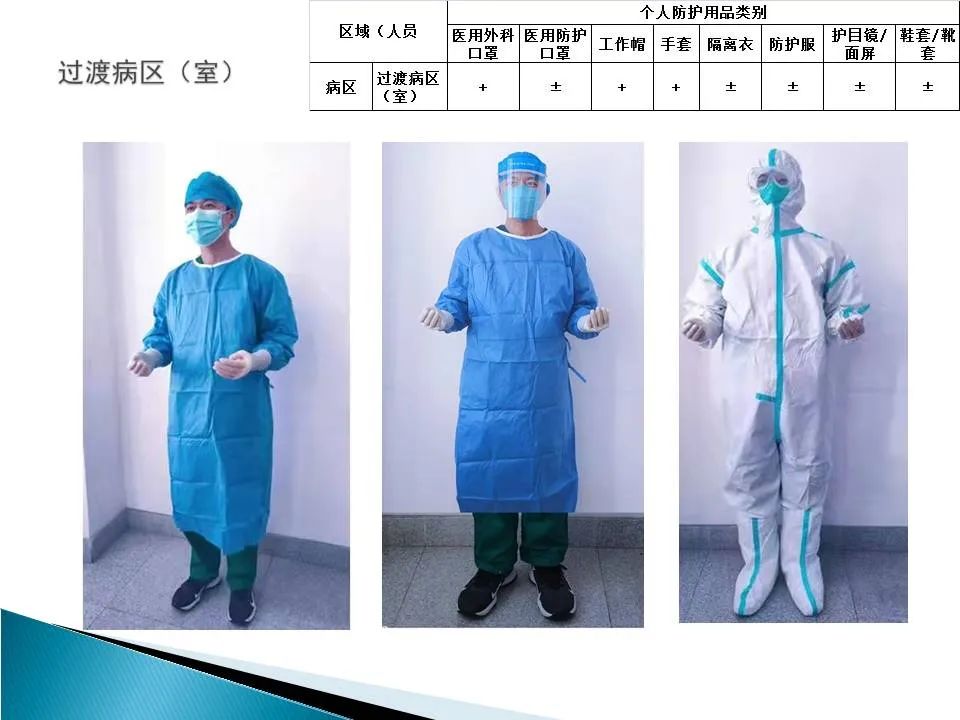
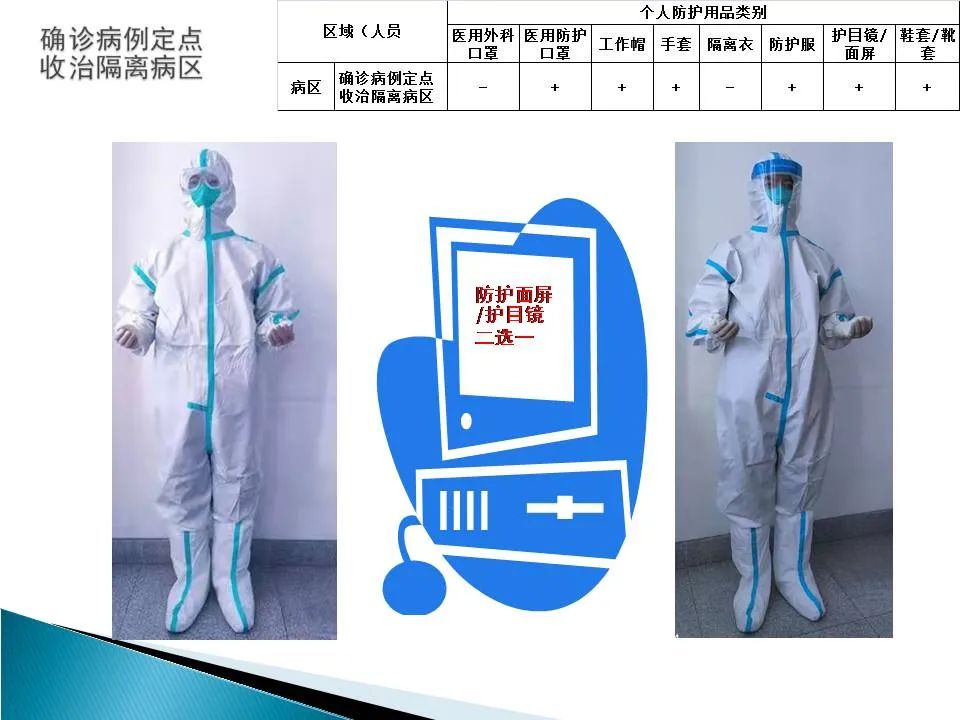
关于作者